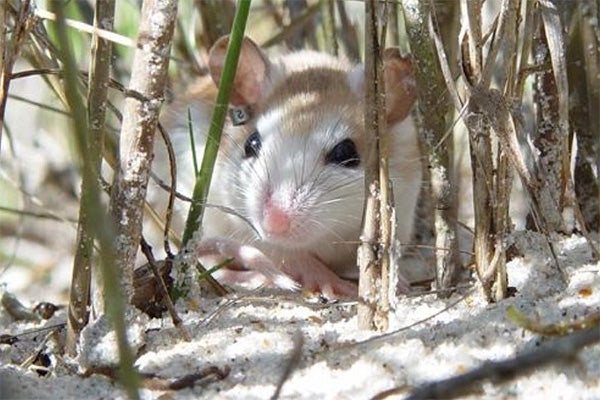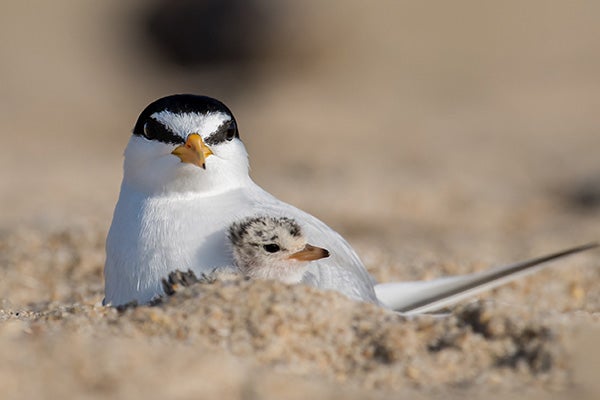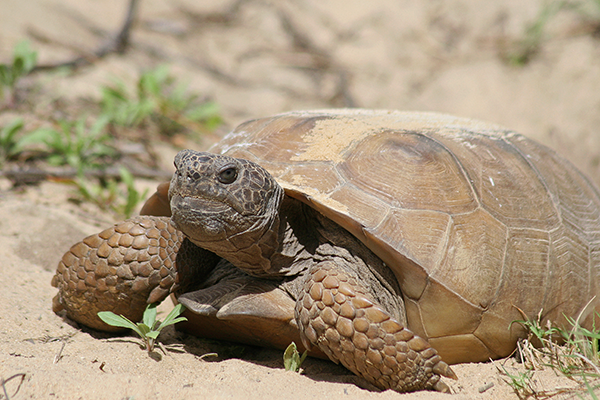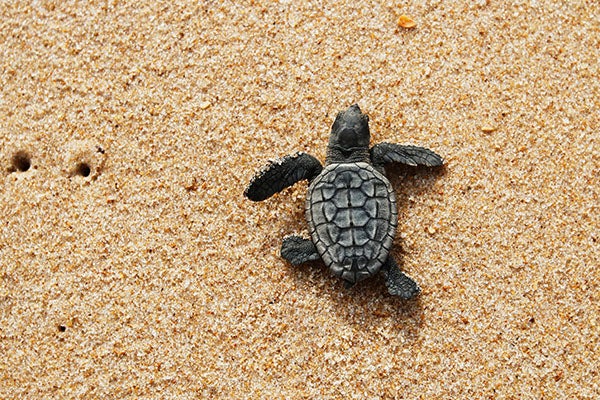Coastal Wildlife
St. Johns County is home to a variety of wildlife including several species of endangered or threatened sea turtles, the native Anastasia Island beach mice, gopher tortoises, and shorebirds. Each spring our beaches our buzzing with activity as coastal wildlife use our beaches and dunes for nesting and foraging that continues throughout the summer months.
Sea turtles have definitive time of the year that nesting activities occur from May 1 – October 31. Those who live and visit St. Johns County have a special opportunity and responsibility to protect these magnificent creatures and their vulnerable nesting and foraging habitats. Meet the Sea Turtles
Meet the Species
Anastasia Island Beach Mouse
The Anastasia Island Beach Mouse is on the federal endangered species list. They live in the sand dunes of Anastasia Island and on the unnamed barrier island north of the St. Augustine Inlet at the Guana River State Park. They have a light buff colored back, pure white underparts, and indistinct, white markings on their face.
Habitat
The Anastasia Island Beach Mouse inhabits sand dunes where sea oats and dune panic grass grow. The area near these dunes is populated by oaks and sand pine or palmetto. They dig burrows for nesting and food storage and sometimes live in old ghost crab holes.
Concerns
Both of these species are primarily threatened by beach and residential development which has eliminated suitable habitat. Predators such as raccoons, skunks, snakes, great-blue herons, dogs, and cats pursue the species. Other predators include house mice and free-ranging house cats.
Least Tern
In early spring, least terns return to Florida from wintering grounds in Latin America. They soon pair up using courtship rituals in which hopeful males offer small fish to prospective mates. The seabirds nest in shallow “scrapes” they make on broad expanses of bare sand. Peak nesting season is from mid-May through July in central Florida, though nesting may continue through August. Eggs are incubated by adults for about 21 days. The young leave the nest in a few days, but don’t begin to fly until about three weeks later.
For a brochure on beach-nesting birds or to report a colony, contact Florida Fish and Wildlife’s northeast regional office at (352) 732-1225.
Nesting Habits
Nesting least terns are extremely susceptible to disturbance. Eggs and young birds blend in perfectly with the surrounding sand. This camouflage coloration is a good defense against many natural predators such as crows and laughing gulls. Unfortunately, this strategy backfires when beach-goers unknowingly walk or drive through nesting areas destroying eggs and killing young birds. Even if colonies are not directly impacted, disturbance near nesting areas can cause adult terns to leave their nests and young to chase away the source of disturbance. If this happens to often, eggs and chicks can overheat and perish in the hot mid-day sun. Because of these problems, least tern colonies are often posted to keep vehicle and pedestrian traffic away from nesting areas.
Least terns are “colonial” nesters, meaning they nest together in groups. Colonies can range in size from just a handful of birds to hundreds of nests. Colonial nesting provides safety in numbers from aerial predators and is also thought to aid exchange of information about constantly shifting food resources (mainly schools of small fish such as sardines and menhaden). Adult and juvenile least terns are thought to follow successful foragers back to areas where they are catching fish.
Habitat Loss
In the past couple of decades, due to habitat loss and disturbance on natural beach nesting areas, least terns have taken to nesting on flat, gravel roofs. It is thought that perhaps 70% of least tern colonies are now on rooftops in Florida. However, these nesting substrates are disappearing fast as these older buildings are demolished or reconstructed with more modern roofs unsuitable for tern nesting. This makes natural mainland beach and barrier island habitats all that more important to least terns. Along the entire Atlantic Coast of Florida this year, less than 10 least tern ground colonies have been reported.
What can you do to help?
The most important thing any beachgoer can do is to respect posted areas and report nesting birds in areas where colonies have not yet been posted. Dogs should be left at home or kept on leashes well away from posted areas. Least tern colonies on rooftops often don’t last long as building owners see the birds as a nuisance to patrons visiting their establishment. Encouraging building owners to accommodate nesting terns rather than get rid of them, may help these areas continue to be important breeding sites for least terns for years to come.
Report bird harassment to the Florida Fish and Wildlife Conservation Commission Wildlife Alert 1 (888) 404-3922.
Gopher Tortoise
Gopher tortoises (Gopherus polyphemus) are a Florida threatened species which utilize a variety of upland habitats, from beach dunes to upland scrub and pine flatwoods. They are vegetarian reptiles and regulate their temperature from their environment and dig a deep burrow to avoid the summer heat and allow retreat from the winter cold.
Gopher tortoises are considered a “keystone species” because their burrows are utilized by over 300 other species, which do not have the ability to construct the burrow themselves. They have spade feet, which are excellently adapted for digging, and their holes are easily distinguishable from other burrowing animals by the unique dome-shape.
The Gopher Tortoise protected status is due to overharvesting for food and shell-based items.
Sea Turtles
If You See a Turtle in Distress
If you find a sick / injured / dead sea turtle do not put them back into the water as they may need medical attention. Please call Florida Fish & Wildlife Conservation Commission’s 24-hour Wildlife Alert Number at 1-888-404-FWCC (1-888-404-3922).




